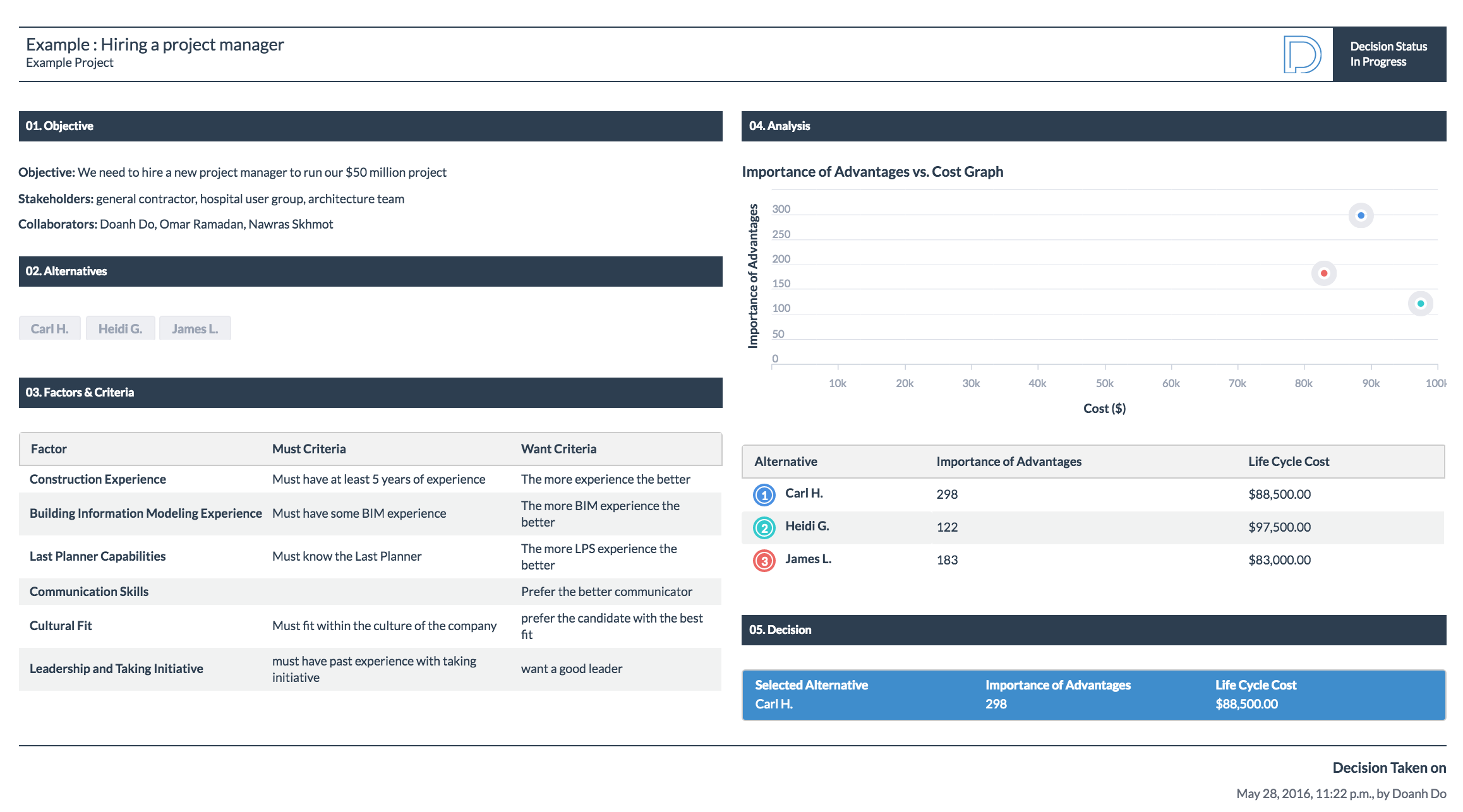All characters, companies, and events in this scenario are entirely fictional. The goal of the scenario is to demonstrate how a company might use the Paramount Decisions process to make a transparent and data-driven hiring decision.
Over the past 5 years, there has been a major building bloom in the city. DGA Builders has been in business for over 40 years is feeling the effects of this increased market activity. The company has just been awarded a 50 million USD high rise project. After searching through his network, the hiring manager has identified three potential candidates to hire for the role of project manager. He is using Paramount Decisions to make a more informed hiring decision that allows him to evaluate the candidates based on criteria that has been correlated to a successful project manager.
Hiring decisions in the past has mostly been based on relationships and politics which lead to some hits and misses. The hiring manager hopes that this formal process can allow them to select that candidate that is most suitable for the project leading to more successful and profitable projects.

The first step is to define the decision's goals and objectives. In this situation the hiring manager needs to evaluate three candidates. The stakeholders of this decision include: the craft workers, the company, the project engineers, the owner, the architect, and the trade partners.
There are three alternatives for this decision: 1) Carl H., 2) Heidi G. and 3) James L. Carl H. is a construction manager with 10 years of experience from a competitor company. He has expert level knowledge of the Last Planner System and current serves as an active member in the Lean Construction Institute's Community of Practice. Heidi G. is currently a senior project engineer at the company. She has experience working on the highly successful spaceship project for an unnamed client. She is still new to the Last Planner System but is a fast learner. Jame L. comes from the owner's representative world. He is an excellent communicator and was considered by the hiring committee to be the best cultural fit for the company.
For this decision, the hiring manager has decided to consider the following factors:
1) Construction Experience
2) Building Information Modeling Experience
3) Last Planner Capabilities
4) Communication Skills
5) Culture Fit
6) Leadership and Taking Initiative
The criteria of each of these factors are shown below.
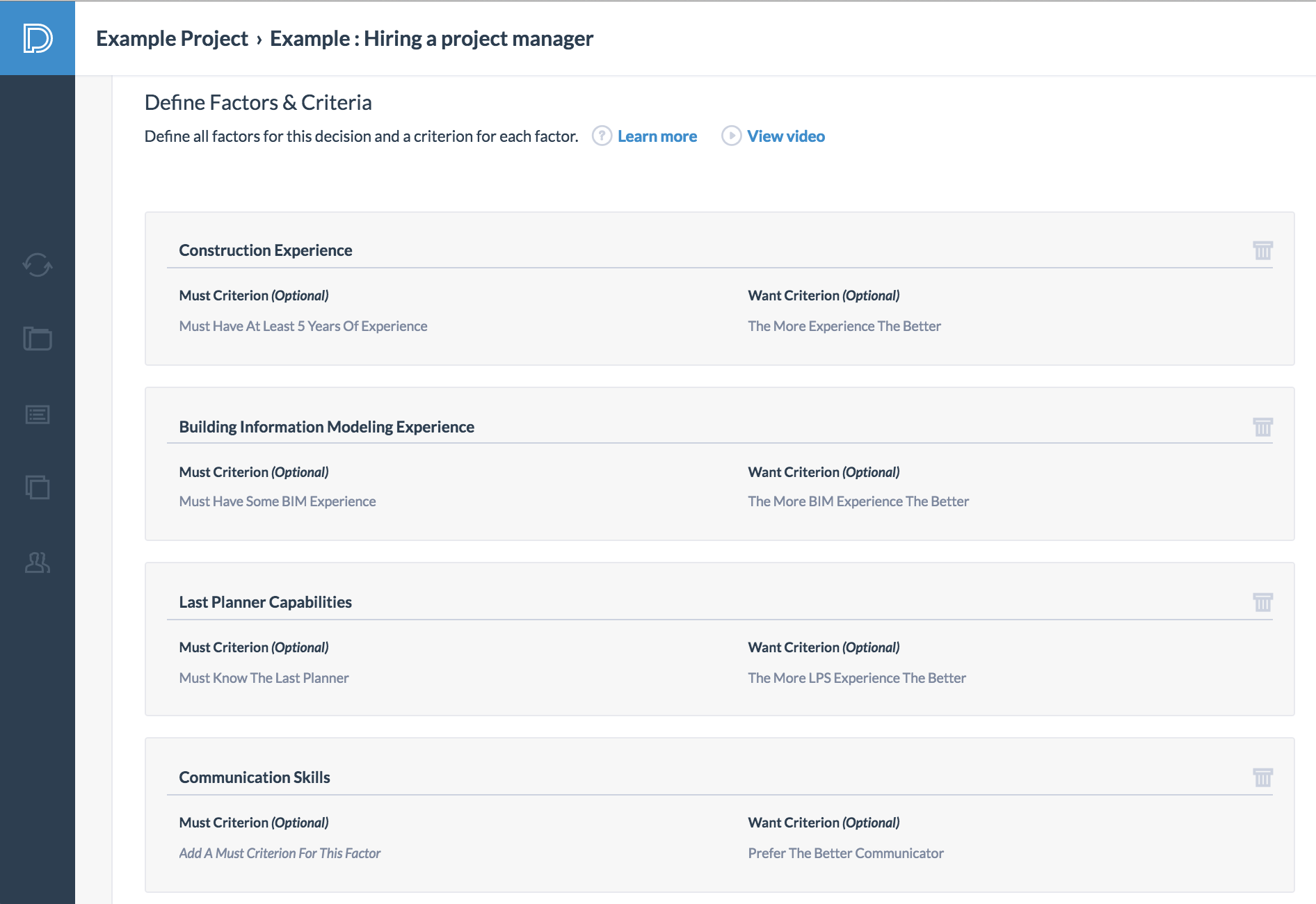
During the interview, the hiring manager asks the candidates about their past experience and puts them in hypothetical situations to gauge their response. The well defined factors and criteria makes the interview process more structured and ensures that he asks all the candidates the same questions. The data from the inteviews are used to fill out the attributes, which is a characteristic or quality of the candidate.
Some of the attributes of this decision are shown below.
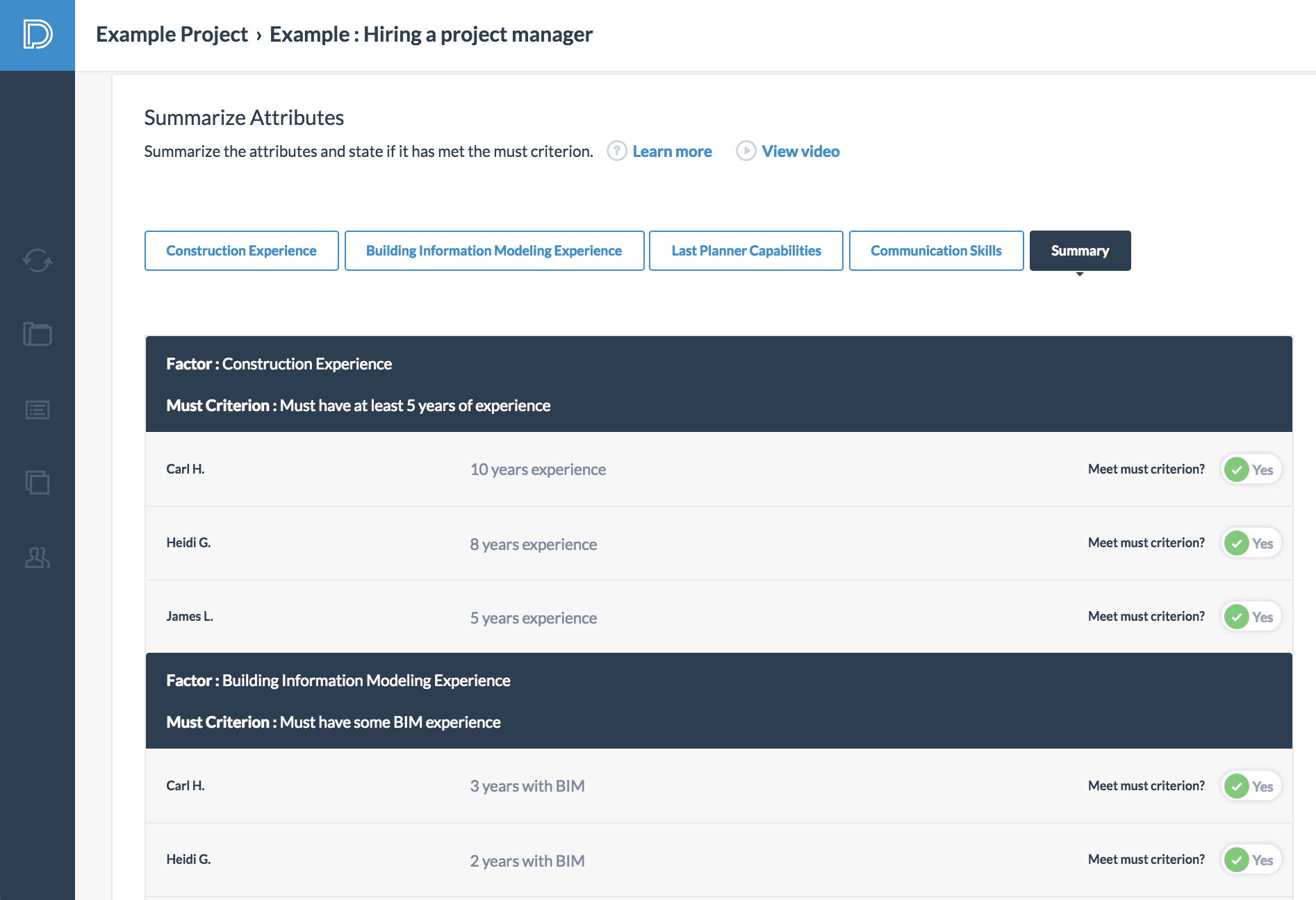
The key insight in making good decisions is to base them on the advantages of alternatives. Following the three step approach for each factor, the hiring manager first selects the least preferred attribute. He then states the advantages of the candidates relative to the least preferred attribute and selects the most important advantage within each factor. For the first factor (construction experience), the hiring manager found that James L. has the least experience and is therefore the baseline for comparison. Carl H. has an advantage of "5 more years of experience" and Heidi G. has an advantage of "3 more years of experience" relative to James.

The sixth step in the decision-making process is the most subjective and requires an open dialogue between the stakeholders. The hiring manager sits down with the upper management of the company to discuss which of the advantages is most important. For this project, they agreed that having 5 more years of construction experience is the paramount advantage. They then weigh to the other advantages using the paramount advantage as an anchor.
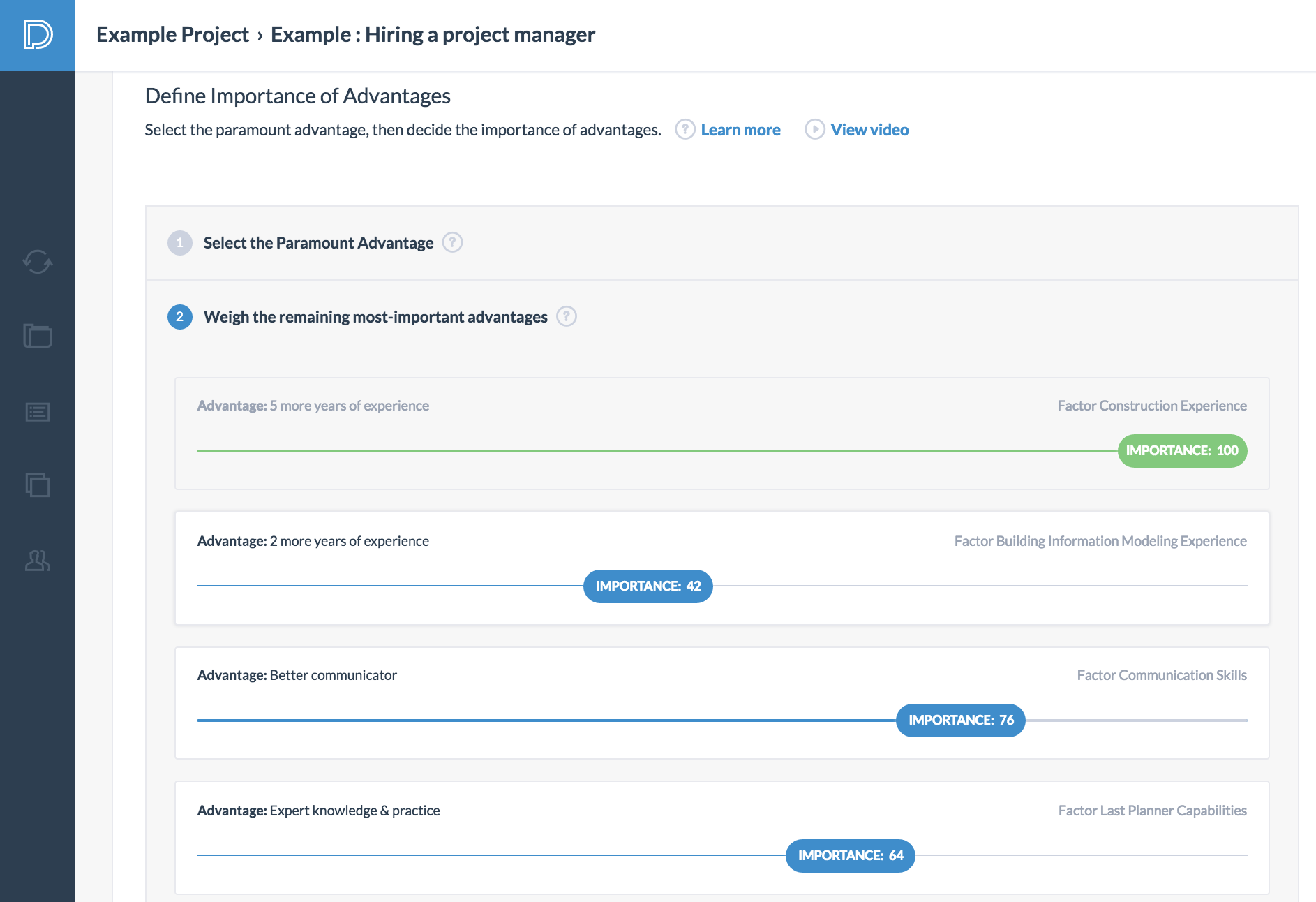
The seventh step in the decision-making process is to define the cost. The cost is the price that must be paid in order to obtain a candidate. Each candidate has his or her own salary expectation for this job. In addition to salary, the company must also pay for benefits and bonuses which adds up to the total compensation package for the candidates.
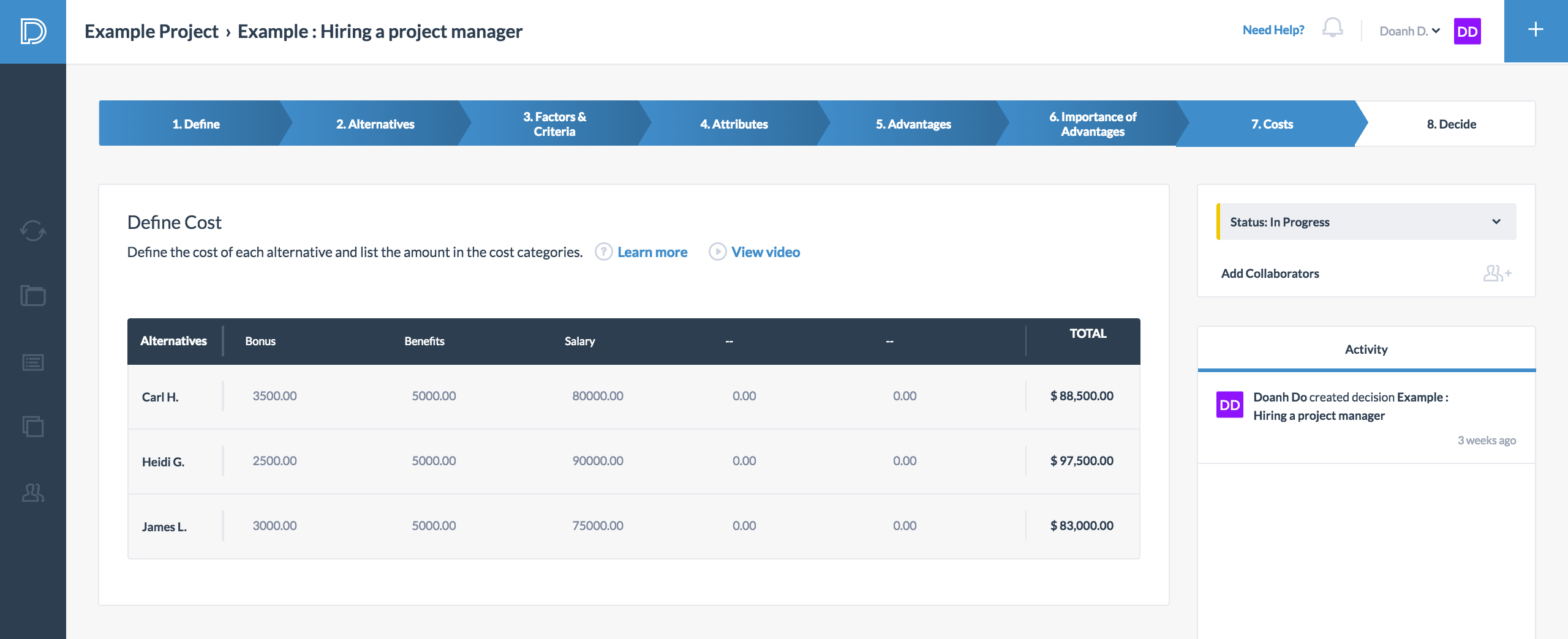
The hiring manager finally makes his decision base on the total importance of advantages vs cost. In this situation, candidate 1 (Carl H.) has a total importance of advantages of 298 and costs 85,500 USD per year. Candidate 2 (Hiedi G.) has a total importance of advantages of 122 and costs 97,500 USD per year. Candidate 3 (James L.) has a total importance of advantages of 183 and costs 83,500 USD per year.
The chart shows that Hiedi G. has the least importance of advantages and costs the most. The hiring manager quickly sees that she is not the best candidate for this project. He looks at the difference in importance of advantages and cost between Carl H. and James L. to make his final decision. He finally selects Carl H. for the project. His rationale is as follows: "Although Carl H. cost 5500 USD more than James L., he brings 115 additional importance of advantages. The small increase in compensate is suitable due to additional advantages that project will have for hiring him."
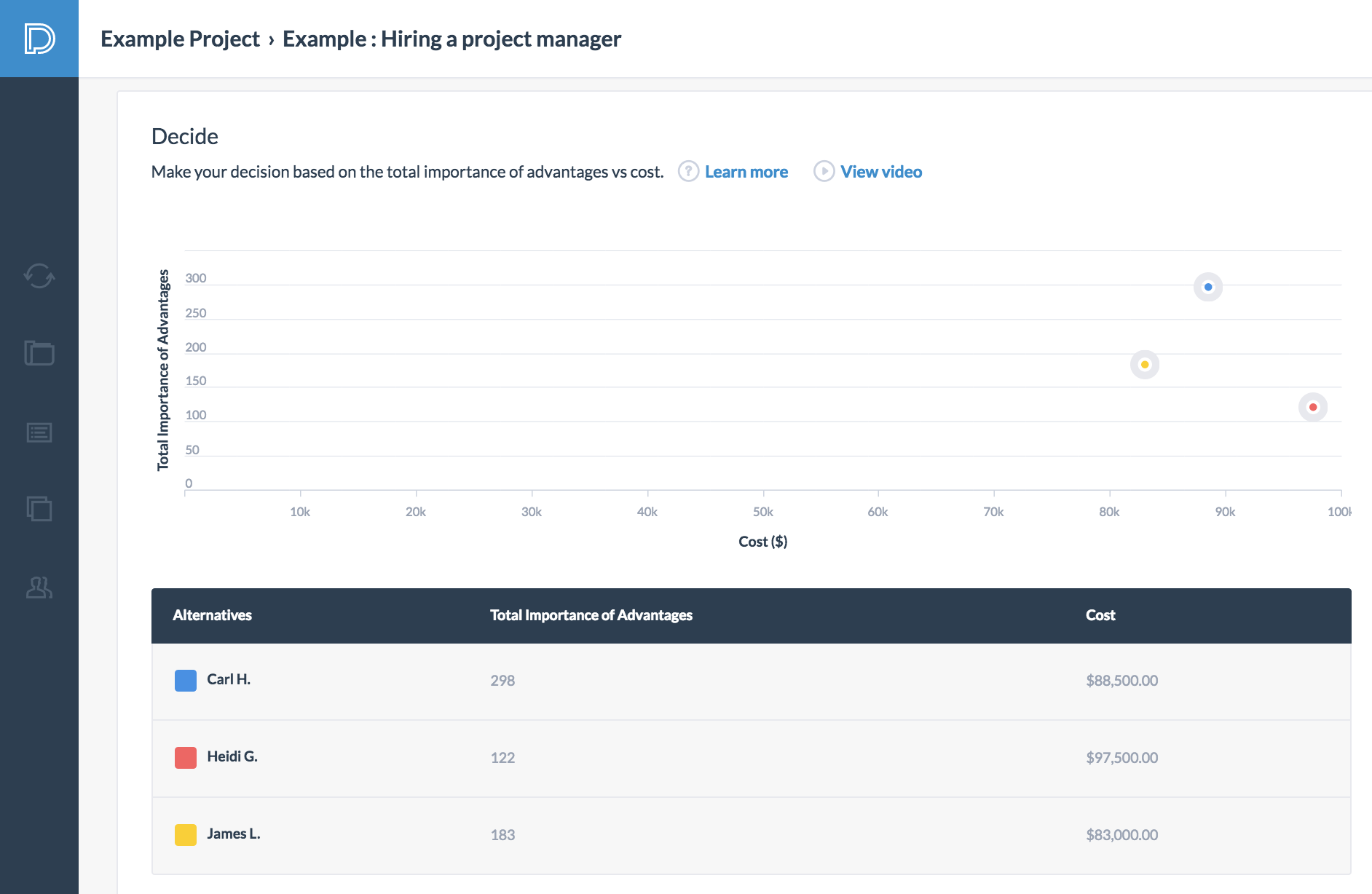
One of the benefits of using Paramount Decisions is the automatically generated reports. The software can create two types of reports base on the data inputted for the decision: 1) a full report and 2) a single page (A3 report). The hiring manager can document all of his hiring decisions on the Paramount Decisions platform. For his next hiring decision, he will re-use factors and criteria that are relevant to the situation. In 6 months, he will do a follow-up with the candidates that have been hired and uses the information on their performance to recalibrate his hiring process. The company now has a standardize and data-driven process for making critical hiring decisions.
